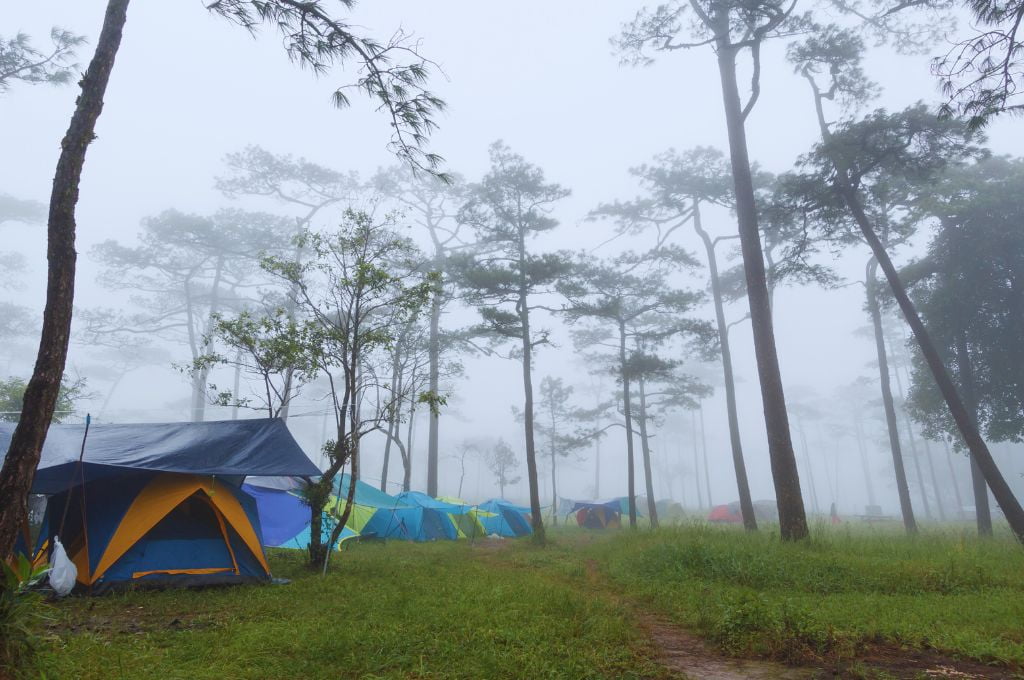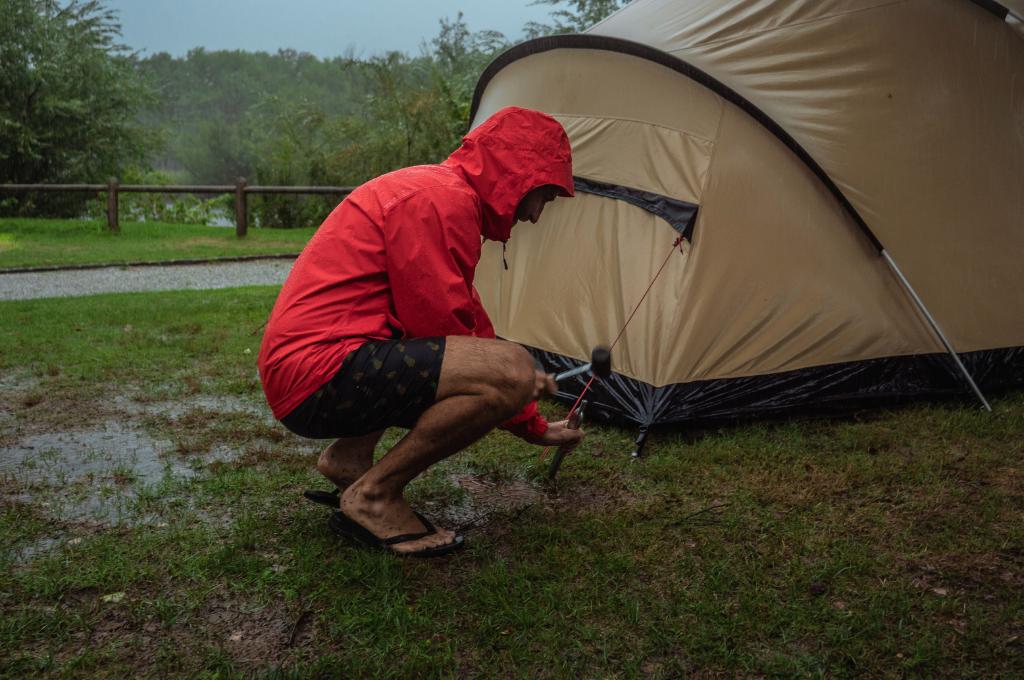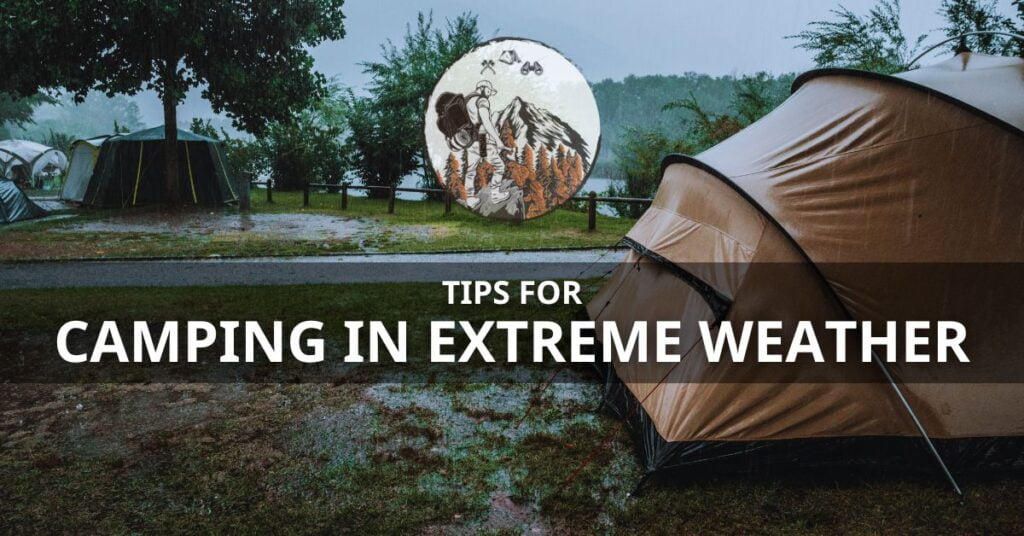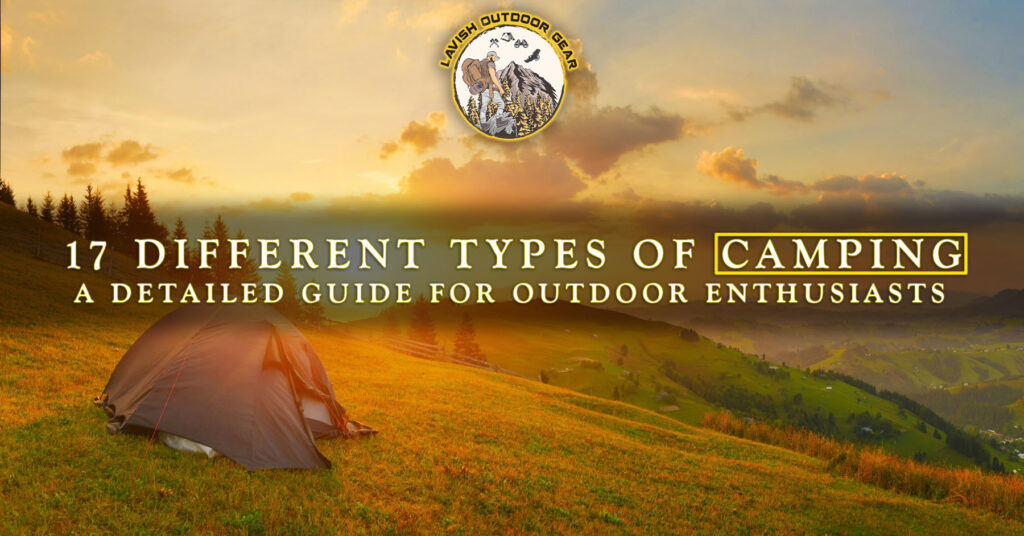Camping in Extreme Weather is an adventure that brings us closer to nature. Camping is an adventure that brings us closer to nature. However, nature isn’t always sunny skies and mild breezes. Sometimes, it’s a roasting heatwave or a bone-chilling blizzard. This is where extreme weather camping comes in. It’s about embracing these challenges and enjoying the outdoors, no matter the conditions.
However venturing into the wilderness under such circumstances requires expert knowledge, preparation, and safety precautions to ensure an enjoyable and safe experience. Read on to learn how to prepare for camping in extreme weather conditions.
Table of Contents
Definition of Extreme Weather Camping
Extreme weather camping refers to camping in conditions that are outside the realm of typical weather patterns, such as heatwaves, cold winters, heavy rain, windstorms, and snowstorms. These conditions require special preparation and gear to ensure safety.
The Importance of Preparation
Preparation is key to managing any extreme weather camping trip. It involves understanding the potential weather conditions, having the right gear, knowing how to set up a weather-resilient campsite, and being mentally prepared for challenging situations.

Understanding Extreme Weather Conditions
Extreme weather conditions can vary greatly, and each brings its own set of challenges and considerations.
Cold Weather Camping
Cold weather camping in winter or high altitudes poses risks such as hypothermia and frostbite. It requires warm clothing, a winter-rated sleeping bag, and knowledge of how to manage and generate warmth efficiently.
Hot Weather Camping
Camping in heatwaves or desert conditions can lead to dehydration, heatstroke, and exhaustion. Key strategies include staying hydrated, seeking shade during the hottest day, and wearing lightweight, breathable clothing.
Rainy and Stormy Weather
Camping in heavy rain or windstorms requires a sturdy, waterproof tent, rain gear, and the ability to secure your campsite against strong winds. It also means being prepared for the possibility of flash floods.
Pre-Trip Planning
Preparation is key to a successful camping venture in extreme weather.
Researching Weather Forecasts
Check reliable weather forecasts for your camping destination before you leave. Keep an eye on the weather trends leading up to your trip and prepare accordingly.
Choosing Appropriate Campsites
Terrain Considerations
Choose a campsite that is sheltered and has good drainage. Avoid camping in low-lying areas where water could pool or near unstable trees or branches that could fall during a storm.
Proximity to Emergency Services
Consider the proximity to emergency services. If you’re camping in extreme conditions, being closer to help could be crucial.
Essential Gear for Extreme Weather Camping
Packing the right gear is vital.
Cold Weather Gear
Insulated Clothing
Pack insulated clothing, thermal socks, and winter hats. Invest in high-quality insulated clothing. Layer your clothing to trap heat more effectively.
Sleeping Bags and Pads
A four-season sleeping bag and an insulated sleeping pad are essential for keeping warm on cold nights.
Hot Weather Gear
Lightweight Clothing
Lightweight, breathable clothing is essential. Opt for light-colored clothing that reflects sunlight.
Sun Protection
Pack a wide-brimmed hat, sunglasses, and sunscreen to protect against sunburn.
Rainy and Stormy Weather Gear
Waterproof Clothing
Waterproof jackets and pants along with sturdy boots are crucial to stay dry in the rain. Also, consider waterproof covers for your backpack.
Tarps and Shelter Options
Tarps can provide additional shelter for cooking or hanging out during a rainstorm. Pack tarps and extra stakes for your tent for added shelter and stability. Ensure your tent is sturdy and waterproof.

Setting Up a Weather-Resilient Campsite
Setting up your camp to withstand weather extremes can make a significant difference.
Proper Tent Pitching Techniques
Learn to pitch your tent securely to withstand high winds. Use all guy lines and ensure your tent is secured to the ground properly. Especially in windy conditions, securing all guy lines and possibly adding extra stakes is essential.
Campfire Safety in Extreme Conditions
In cold and wet conditions, know how to start and maintain a fire for warmth and cooking. Ensure you have waterproof matches or a fire starter. Be aware of fire safety and restrictions in hot and dry conditions as wildfires can easily be sparked.
Food and Cooking Considerations
Meal planning should also consider the weather conditions.
Meal Planning for Different Weather Conditions
In cold weather, high-calorie foods can help keep your body warm. In hot weather, opt for light meals that won’t spoil in the heat. Always have a waterproof method of cooking.
Safe Cooking Practices in Extreme Weather
Ensure your cooking area is well-ventilated and away from flammable materials. In windy conditions, use windbreaks to protect your stove. Always ensure that your cooking fire is fully extinguished before leaving it unattended.
Health and Safety Protocols
Awareness of potential health risks and safety protocols is crucial.
Recognizing and Treating Hypothermia
Understand the signs of hypothermia, like uncontrollable shivering, confusion, and drowsiness, and know how to respond by warming up the body slowly and seeking medical help if necessary.
Dealing with Heat-Related Issues
Know the symptoms of heatstroke and dehydration and how to prevent them by taking regular breaks, seeking shade, and staying hydrated.
First Aid Kit Essentials
Carry a first aid kit equipped with supplies to handle injuries, burns, bites, and illnesses. Include essential medications and items specific to your needs and the weather conditions, such as sunburn cream or thermal blankets.
Navigation in Challenging Conditions
Navigating in extreme weather can be tricky.
Using Maps and Compass
Even in this age of GPS, traditional navigation tools like maps and compasses are valuable, as they don’t rely on battery power. In extreme weather, technology can fail. Know how to use a map and compass to navigate.
GPS and Technology Considerations
While GPS units and smartphones are handy, don’t rely solely on them for navigation. Always carry spare batteries or a charger.
Communication Strategies
Maintaining communication with the outside world is crucial, especially in emergencies.
Emergency Communication Devices
Consider bringing a satellite phone, emergency beacon, or two-way radio for communication in remote areas where cell service may not be reliable.
Signaling for Help
Know basic distress signals and have a whistle, flares, or a mirror for signaling emergencies.
Mental Preparedness
Camping in extreme weather is as much a mental challenge as it is physical.
Coping with Isolation and Stress
Camping in extreme weather can be mentally challenging. Practice stress management techniques like deep breathing exercises or meditation.
Staying Calm in Crisis Situations
Keeping a clear head is crucial in an emergency. Practice mindfulness and positive thinking to help manage fear and panic.
Leave No Trace Principles
Even in extreme conditions, responsible camping is crucial.
Responsible Camping Practices
Follow the Leave No Trace principles to minimize your impact on the environment. This includes properly disposing of waste, respecting wildlife and other campers, and not disturbing natural resources.
Environmental Impact Awareness
Understand how your presence can affect the environment and take steps to limit your footprint. This is especially important in sensitive environments or during extreme weather conditions.
Conclusion
Camping in extreme weather presents unique challenges, but with careful preparation, the right gear, and knowledge of weather-specific safety precautions, it can be a rewarding experience. Remember, your safety is paramount, so always have a backup plan, and don’t hesitate to cancel or change your plans if the weather turns dangerous.
Thank you for taking the time to explore our recommendations. Don’t forget to share this guide with your friends if you found it helpful!
Happy Adventures!
FAQs
Q: What is the best clothing for cold-weather camping?
Layer your clothing. Start with a moisture-wicking base layer, add an insulating middle layer (like fleece or down), and finish with a waterproof and windproof outer layer.
Q: How do I stay cool during hot weather camping?
Stay hydrated, seek shade during the hottest part of the day, wear breathable clothing, and protect yourself from the sun with a hat and sunscreen.
Q: What should I do in case of a sudden storm?
Seek shelter in your tent or under a tarp if possible. Stay away from tall trees or other potential hazards. If lightning is present, avoid open areas and bodies of water.
Q: What is extreme weather camping?
Extreme weather camping involves camping in conditions outside typical weather patterns, like heatwaves, cold winters, heavy rain, windstorms, and snowstorms, requiring special preparation and gear.
Q: What gear is necessary for hot weather camping?
For hot weather camping, pack lightweight, breathable clothing, a wide-brimmed hat, sunglasses, sunscreen, and waterproof jackets and pants for potential rain.
Q: How should one pitch a tent securely in extreme conditions?
Learn proper tent pitching techniques, using all guy lines and extra stakes if needed, especially in windy conditions, to ensure stability.



